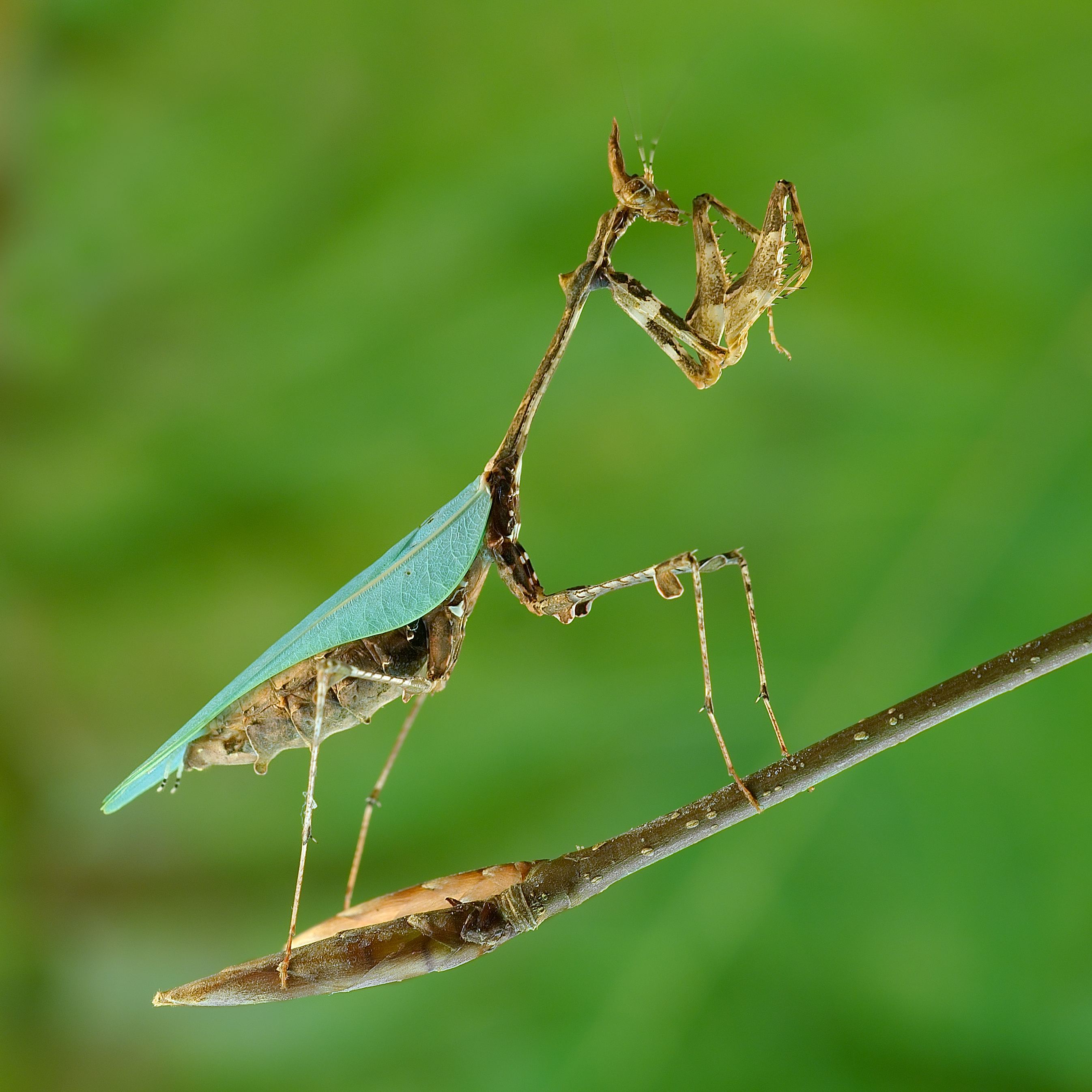Sibylla Pretiosa on:
[Wikipedia]
[Google]
[Amazon]
''Sibylla pretiosa'',Stål C (1856) ''Ofvers. K. VetensAkad. Forh. Stockh.'' 13: 168. commonly known as the cryptic mantis, is a species of
 They have unusual leaf-like femoral projections near the joints of their four walking legs. Adults are distinguished from most other mantis species by their leaf-like wings, generally the only green portion of the mantis's otherwise brown and mottled
They have unusual leaf-like femoral projections near the joints of their four walking legs. Adults are distinguished from most other mantis species by their leaf-like wings, generally the only green portion of the mantis's otherwise brown and mottled
mantis
Mantises are an order (Mantodea) of insects that contains over 2,400 species in about 460 genera in 33 families. The largest family is the Mantidae ("mantids"). Mantises are distributed worldwide in temperate a ...
found in southern Africa. They have a long and thin prothorax
The prothorax is the foremost of the three segments in the thorax of an insect, and bears the first pair of legs. Its principal sclerites (exoskeletal plates) are the pronotum (dorsal), the prosternum ( ventral), and the propleuron (lateral) on ...
. The distinctively ornamented species has projections on the head, prothorax, and four femora. They live on tree bark in woodlands.
Description
 They have unusual leaf-like femoral projections near the joints of their four walking legs. Adults are distinguished from most other mantis species by their leaf-like wings, generally the only green portion of the mantis's otherwise brown and mottled
They have unusual leaf-like femoral projections near the joints of their four walking legs. Adults are distinguished from most other mantis species by their leaf-like wings, generally the only green portion of the mantis's otherwise brown and mottled exoskeleton
An exoskeleton () . is a skeleton that is on the exterior of an animal in the form of hardened integument, which both supports the body's shape and protects the internal organs, in contrast to an internal endoskeleton (e.g. human skeleton, that ...
. The thorax of the cryptic mantis is very thin and elongated, similar to that of the wandering violin mantis, '' Gongylus gongylodes''. Adult females generally reach in length, while the males are generally about smaller. The lifespan of the wild cryptic mantis is unknown, but they have been known to live up to nine months in captivity (wild mantises likely live slightly longer, a year and a few months).
Feeding habits
The mantis almost exclusively eats flying prey, with ''Drosophila melanogaster
''Drosophila melanogaster'' is a species of fly (an insect of the Order (biology), order Diptera) in the family Drosophilidae. The species is often referred to as the fruit fly or lesser fruit fly, or less commonly the "vinegar fly", "pomace fly" ...
'' fruit flies being the food of preference for young nymphs in captivity. Adults and fifth- or sixth-instar
An instar (, from the Latin '' īnstar'' 'form, likeness') is a developmental stage of arthropods, such as insects, which occurs between each moult (''ecdysis'') until sexual maturity is reached. Arthropods must shed the exoskeleton in order to ...
nymphs can tackle much larger prey, such as house flies, small bees, and moths.
References
{{Taxonbar, from=Q2128559 Sibyllidae Mantodea of Africa Taxa named by Carl Stål Insects described in 1856